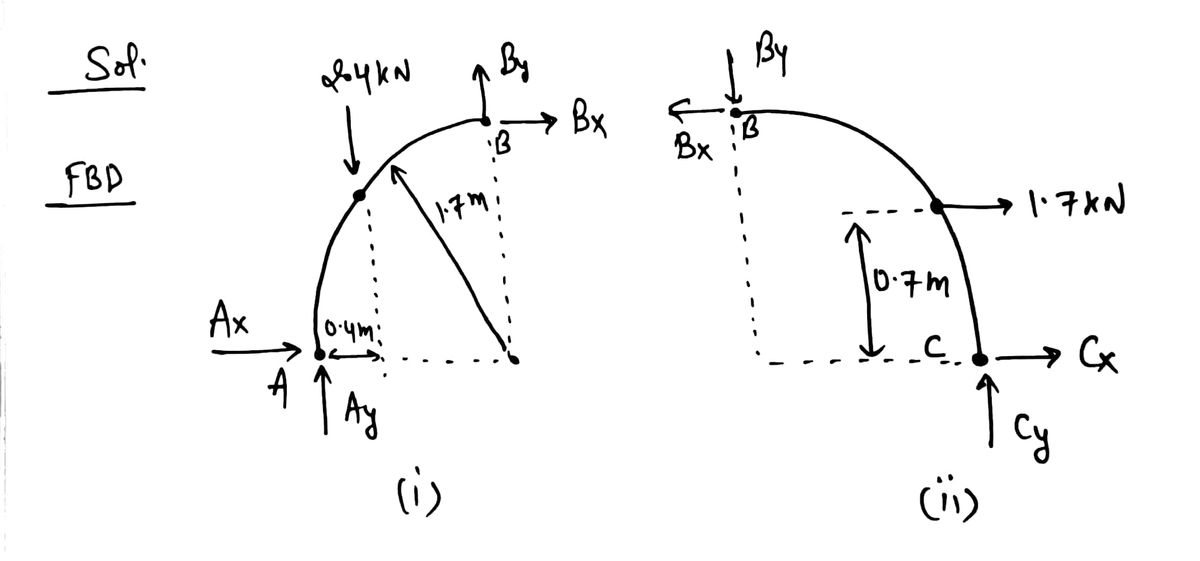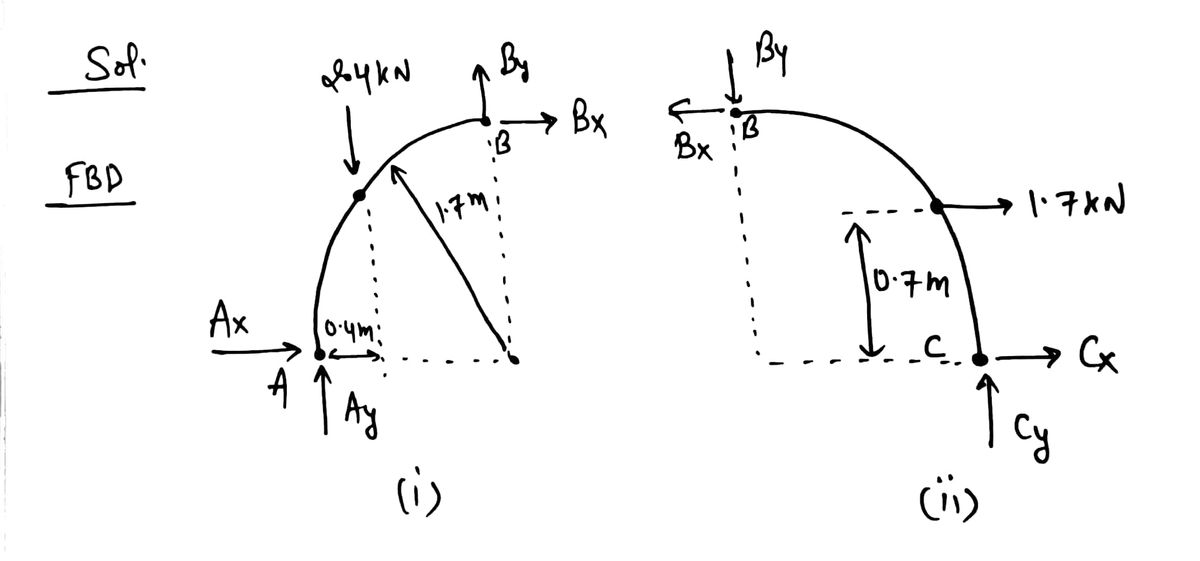2.4 kN B -1.7 kN 1.7 m 0.7 m 0.4 m For component directions use y positive to the right and v positive upward
2.4 kN B -1.7 kN 1.7 m 0.7 m 0.4 m For component directions use y positive to the right and v positive upward
Elements Of Electromagnetics
7th Edition
ISBN:9780190698614
Author:Sadiku, Matthew N. O.
Publisher:Sadiku, Matthew N. O.
ChapterMA: Math Assessment
Section: Chapter Questions
Problem 1.1MA
Related questions
Question

Transcribed Image Text:The image shows a curved structural beam supported at points A and C. The beam is subjected to two forces: a downward force of 2.4 kN and a horizontal force of 1.7 kN.
Key points in the diagram:
- **Point A** is the starting support point on the left side, located 0.4 meters from vertical.
- **Point B** is the center of the arch.
- **Point C** is the support point on the right side.
- The vertical distance from B to the base is 0.7 meters, while the horizontal length from A to the vertical line below B is 1.7 meters.
The beam experiences:
- A **2.4 kN** downward force at a point on the left part of the arch.
- A **1.7 kN** rightward force applied at the same horizontal level as point B on the right part of the arch.
For analyzing components, use the positive x-direction to the right and the positive y-direction upward.

Transcribed Image Text:**Problem C:**
What is the \( x \) component of the reaction at point C?
(Include units with answer)
**Problem D:**
What is the \( y \) component of the reaction at point C?
(Include units with answer)
Expert Solution
Step 1


Step by step
Solved in 2 steps with 3 images

Knowledge Booster
Learn more about
Need a deep-dive on the concept behind this application? Look no further. Learn more about this topic, mechanical-engineering and related others by exploring similar questions and additional content below.Recommended textbooks for you

Elements Of Electromagnetics
Mechanical Engineering
ISBN:
9780190698614
Author:
Sadiku, Matthew N. O.
Publisher:
Oxford University Press

Mechanics of Materials (10th Edition)
Mechanical Engineering
ISBN:
9780134319650
Author:
Russell C. Hibbeler
Publisher:
PEARSON

Thermodynamics: An Engineering Approach
Mechanical Engineering
ISBN:
9781259822674
Author:
Yunus A. Cengel Dr., Michael A. Boles
Publisher:
McGraw-Hill Education

Elements Of Electromagnetics
Mechanical Engineering
ISBN:
9780190698614
Author:
Sadiku, Matthew N. O.
Publisher:
Oxford University Press

Mechanics of Materials (10th Edition)
Mechanical Engineering
ISBN:
9780134319650
Author:
Russell C. Hibbeler
Publisher:
PEARSON

Thermodynamics: An Engineering Approach
Mechanical Engineering
ISBN:
9781259822674
Author:
Yunus A. Cengel Dr., Michael A. Boles
Publisher:
McGraw-Hill Education

Control Systems Engineering
Mechanical Engineering
ISBN:
9781118170519
Author:
Norman S. Nise
Publisher:
WILEY

Mechanics of Materials (MindTap Course List)
Mechanical Engineering
ISBN:
9781337093347
Author:
Barry J. Goodno, James M. Gere
Publisher:
Cengage Learning

Engineering Mechanics: Statics
Mechanical Engineering
ISBN:
9781118807330
Author:
James L. Meriam, L. G. Kraige, J. N. Bolton
Publisher:
WILEY